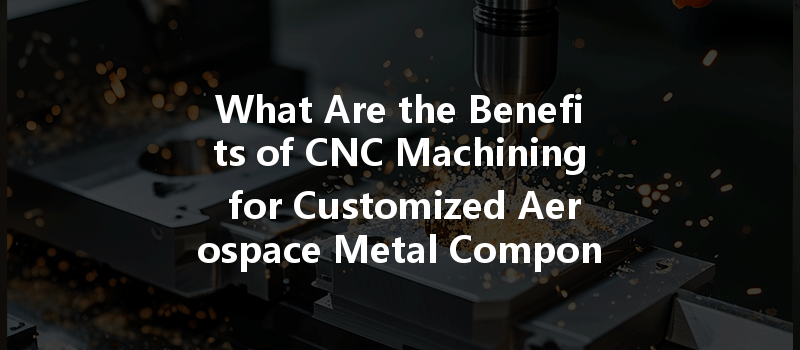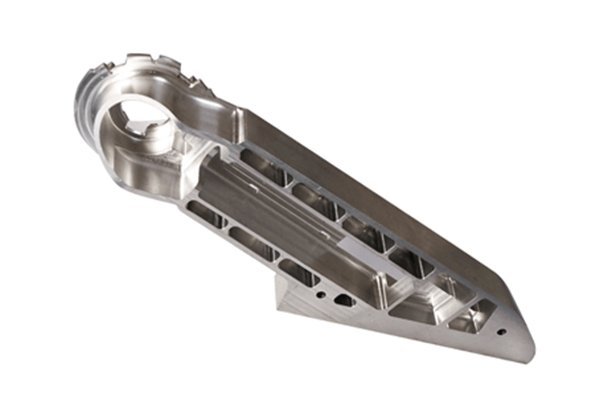Did you know that the global aerospace industry is projected to reach a staggering value of over $1 trillion by 2030? As the demand for lighter, stronger, and more complex components continues to increase, the need for precision machining methods has never been more critical. In particular, CNC (Computer Numerical Control) machining has emerged as a game-changer in the production of customized aerospace metal components. This blog will delve into the intricacies of CNC machining, exploring its benefits, applications, and the technologies that make it indispensable in the aerospace sector.
Understanding CNC Machining in the Aerospace Industry
CNC machining is a highly accurate manufacturing process that uses pre-programmed computer software to control the movement of machinery. This technology is pivotal in creating intricate components that meet the stringent regulations of the aerospace industry. From aircraft frames to engine parts, the ability to produce bespoke components with high precision and repeatability is invaluable.
The Role of CNC Machining in Aerospace
In aerospace manufacturing, CNC machining plays a vital role in several key areas:
Benefits of CNC Machining for Customized Aerospace Metal Components
One of the most significant advantages of CNC machining is its high level of precision. Aerospace components must adhere to strict tolerances; a deviation of even a few micrometers can lead to catastrophic failures. CNC machines offer repeatable accuracy, ensuring that every part produced will meet the required specifications.
The aerospace industry often requires customized solutions, whether for prototyping new designs or modifying existing components. CNC machining provides the flexibility to create tailor-made parts as needed. With CAD (Computer-Aided Design) software, engineers can quickly modify designs and send them to CNC machines for immediate production.
Traditional machining processes can involve lengthy setup times and extensive manual labor. CNC machining significantly reduces lead times because once the design is set, production can begin swiftly. This efficiency is crucial in an industry where time-to-market can determine the success of a project.
While the initial investment in CNC machinery may be high, the long-term cost benefits can outweigh the expenses. High precision machining reduces waste and errors, lowering overall production costs. Additionally, CNC machines can operate around the clock, maximizing output.
With CNC machining, parts produced are not only accurate but also consistent across large production runs. This level of repeatability ensures that every component can be interchanged, an essential factor in assembly line operations in the aerospace sector.
Advanced CNC Technologies in Aerospace Manufacturing
5-axis CNC machining is particularly beneficial for aerospace components requiring complex geometries. Unlike traditional 3-axis machining, which only allows movement along three axes (X, Y, Z), 5-axis machining can operate on two additional axes, offering unparalleled flexibility. This capability enables the creation of more complex parts in a single setup, reducing the number of required machining operations and enhancing accuracy.
Modern CNC machining centers are equipped with integrated manufacturing systems that combine various machining processes into a single setup. This integration can include milling, turning, and drilling, all managed by centralized software. Such systems optimize the production workflow and reduce handling times, further increasing efficiency.

Adaptive control technology allows CNC machines to automatically adjust operational parameters based on real-time analysis of tool performance and workpiece conditions. This feature ensures consistent quality throughout the machining process and minimizes the risk of defects.
Applications of CNC Machining in Aerospace
CNC machining finds applications in numerous areas within the aerospace industry, including:
Challenges Faced in CNC Machining for Aerospace Components
While CNC machining is adaptable to a variety of materials, some aerospace alloys are difficult to machine due to their hardness and toughness. This can lead to increased tool wear and longer machining times, potentially offsetting some of the benefits of CNC technology.
Aerospace manufacturers must adhere to strict regulations established by governing bodies such as the Federal Aviation Administration (FAA) and the European Union Aviation Safety Agency (EASA). Ensuring compliance throughout the machining process can be complex and requires meticulous documentation.
The cost of implementing state-of-the-art CNC technologies can be prohibitive for some manufacturers. However, the long-term benefits often justify the upfront investment, particularly for companies focused on innovation and quality.
Future Trends in CNC Machining for Aerospace Components
The future of CNC machining in the aerospace industry looks promising, with several trends emerging:
CNC machining is revolutionizing the production of customized aerospace metal components. Its unparalleled precision, capacity for customization, and ability to reduce lead times make it an indispensable tool in the industry.
As we have explored, advanced CNC technologies such as 5-axis machining and integrated manufacturing systems are paving the way for greater efficiency and innovation within aerospace manufacturing. However, challenges such as material limitations and regulatory compliance remain crucial considerations for manufacturers.
By understanding and embracing the benefits and emerging technologies in CNC machining, aerospace companies can position themselves for greater success in a rapidly evolving market. The aerospace industry is on the verge of technological breakthroughs, and CNC machining will undoubtedly play a pivotal role in shaping its future.
This blog not only highlights the importance of CNC machining in aerospace applications but also serves as a reminder of the continuous need for evolution and adaptation in manufacturing processes. It’s essential for stakeholders in the aerospace industry to remain informed and engaged, ensuring they leverage the best practices available for their specific needs.
Related Posts
- What is the difference in the compressive performance between 1100 aluminum and 3003 aluminum alloys?
- What Are the Technical Requirements for Complex Surface Machining in Five-Axis CNC Machining?
- How does the CNC aluminum processing factory ensure the dimensional consistency of aluminum parts throughout production?






